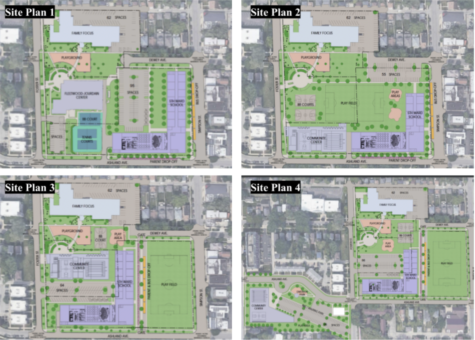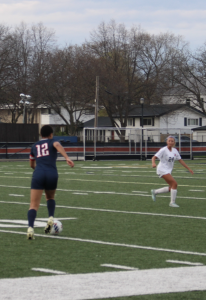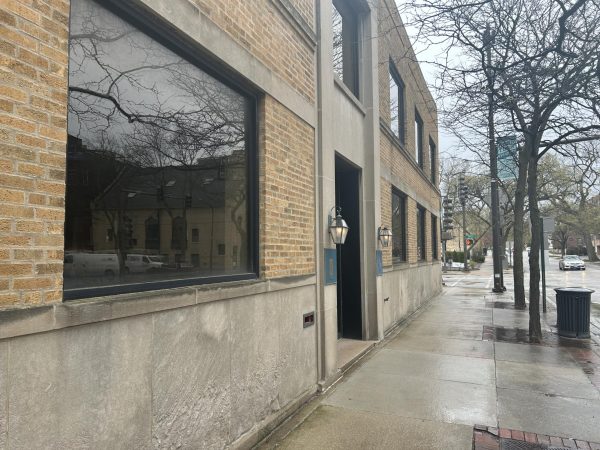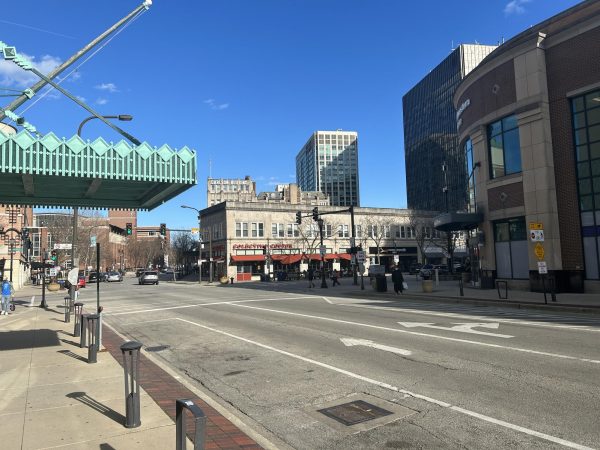Plans to build a new Fifth Ward school progress, but not without controversy
January 28, 2023
The building of a new Fifth Ward school in Evanston prompted by District 65’s current budget crisis and record low levels of enrollment has now entered its third year of official planning. This is followed by a failed effort in 2012 when a 45 million dollar tax referendum to fund the new school was rejected by voters. The current push, however, plans to avoid a tax hike referendum altogether by redrawing district lines to allow more students to walk to a local neighborhood school thus reducing busing costs by up to two million dollars a year. The cutback in busing expenditures however, only accounts for a small portion of the estimated 40 million dollars needed to fund the school.
The Fifth Ward has been without a neighborhood school since the closing of Foster School decades ago. In 1967, District 65 closed Foster School to neighborhood-based attendance before closing it all together in 1979. This was part of their desegregation plan which was an effort to help integrate Black and white students in all nine Evanston elementary schools. As a result of the plan, children who lived in the predominantly Black Fifth Ward were bused across Evanston to various elementary schools, a practice used to this day and one many Fifth Ward residents feel has caused a great injustice to their children by not allowing them to attend school within their own community.
Breaking ground on the project has been impeded by a large variety of differing opinions on the implementation of the new school. These emotions have boiled over in several contentious community meetings and City Council meetings in recent months. This included a heated community meeting in early December 2022 at the Fleetwood-Jourdain Center, which is located adjacent to where the proposed school would be built. This historic Fifth Ward recreation center has also been at the center of the latest controversy as conversations arose about the possibility of demolishing the beloved community hub and rebuilding it as part of the project. Over 150 Fifth Ward residents attended the meeting, vehemently fighting to protect Fleetwood, reminiscing over their childhood experiences from time spent at the center and arguing that there would be plenty of room for the new school without demolishing the center.
“Fleetwood provides a lot of important services for kids and teenagers [in the Fifth Ward]. When there is nowhere else to go, Fleetwood staff always provide us a safe, welcoming place to play basketball and build community. It’s a crucial facility for youth in the Fifth Ward,” said African-American Fifth Ward resident Winston Flowers.
Fleetwood Jourdain was originally opened in 1956 and was known as the Foster Community Center due to its location on Foster Ave; and the center has historically served as a local gathering space, particularly for Evanston’s Black Community, for decades. In 1986 it was renamed Fleetwood-Jourdain Center (FWJ) in honor of Homer D. Fleetwood, the center’s director, and former Fifth Ward alderman Edwin B. Jourdain.
During the December 12th City Council meeting just days after the community meeting at FWJ, the City proposed its final four plans for the implementation of the new school building.

Option One would bring a brand new three-story K-8 school building to the Southeast corner of the lot on Ashland Ave and Simpson St. The school would be built exclusively on District 65-owned property, therefore it would not expand onto FWJ or Family Focus property; it would additionally not require the demolition of Fleetwood allowing the cherished community center to remain open for years to come. The main drawback to this plan would be a vast reduction of green space on Foster Field currently located behind the community center; this space would be filled with 95 staff parking spaces in the rear of the school. The plan would make FWJ’s playground, basketball and tennis courts shared facilities with the new school.
Option Two would bring a brand new four-story school to the same corner; however, the building would expand slightly further west but not as far north on the lot as the first option. This building would require the use of FWJ land and would therefore entail the demolition and rebuilding of FWJ, and its new building would be located on the southwest corner of the lot on Foster St and Ashland Ave. It’s noteworthy that FWJ’s current building would remain intact and not be demolished until the construction of the new school building and community center are completed; this allows normal FWJ operations to continue during the estimated 18-month building process. Under this plan the current Foster Field Green Space would be approximately the same size; the main downside to this plan would be 40 fewer staff parking spaces due to a smaller parking lot located on the North end of the school building along Dewey Ave.
Option Three would also entail building a new four-story school building similar to the second option. The location for this school would be significantly farther west on the lot, placing the school in the middle of Foster Field with 64 staff parking spaces accessible from the west side of the building on Foster Ave, and a playing field equal to approximately 70 percent of Foster Fields located on the south side of the building. This plan would involve building a brand new 25,000 square foot FWJ facility with an 18,000-foot competition swimming pool on the current FWJ ground; nonetheless, demolition of the present FWJ building would be required before construction on the new school could begin. This would displace FWJ operations for up to 18 months and would ultimately cost the city over 30 million dollars to construct.
“Even a temporary closure of Fleetwood would leave a gap in people’s lives. [The demolition of Fleetwood] would be detrimental to my community [and] the children,” said Flowers. “This is people’s childhood, this is where many Fifth Ward residents grew up, they can not take away these memories from the community by demolishing the original building, a new building just wouldn’t be the same.”
Lastly, Option Four brings the same four-story school building in essentially the same location as Option Three. The main difference between Plans Three and Four is the location of the new FWJ building. While Plan Three keeps FWJ in the same location, Plan Four would relocate the new FWJ building to Ashland Ave between Foster and Emerson St, west of the current location. The new location would feature the same 25,000-square-foot building with a swimming pool, a play area, and 86 additional parking spaces. Additionally, there is a plan labeled as 4a which would put the school layout the same as Option Two; the difference being that in Plan 4a Fleetwood-Jourdain would still be rebuilt at the new location. Plan 4a is an alternative option to Plan Four because FWJ would be allowed to remain open during construction instead of being demolished prior to construction. The City of Evanston does not currently own the land proposed for the new FWJ building in Plans Four and 4a; if either plan is selected it would cost the city an additional unspecified amount of money outside of the current budget to acquire the land needed for the new building.
All four plans would close magnet school Bessie Rhodes and likely turn Evanston’s other magnet school King Arts into a neighborhood attendance school for the Second Ward as the district plans to draw new attendance boundaries that they hope to set into effect within the next two to three years.
Following the mixed emotions about the future of FWJ, the City of Evanston released a poll for residents to voice their preferences for the new school and the fate of FWJ. The top choice for all residents polled was Option One with 33.6 percent of the 342 polled choosing Option One as their first choice and 27.2 percent choosing Option Two as their first choice.
The poll collecting opinions on plans for a school that is aimed at rectifying the injustices Fifth Ward residents have faced without a school over the last 50+ years, drew swift criticism from some residents over a perceived lack of diversity among residents after results suggested that only approximately 25 percent of those polled identified as Fifth Ward residents. Of those residents, 37.5 percent picked Option Four as their first choice and 25 percent chose Option One as their first choice.
Additional questions arose about a lack of diversity in the poll after it was further suggested that approximately 22.5 percent of those surveyed identified as Black or Caribbean and less than nine percent identified as Latinx or Hispanic. Furthermore, approximately nine percent of those polled identified as Fifth Ward residents who are Black or Caribbean, and less than two percent identified as Fifth Ward residents who are Latinx or Hispanic. These percentages came from a ward that is more than 60 percent Black and Latinx according to U.S Census Data.
The poll, which ran from Dec. 7, 2022 through Dec. 15, 2022, was distributed via an Evanston Roundtable article, and was shared in Citywide eNewsletters, emails, social media, and a posting on the City Website. District 65 additionally assisted in the distribution of the poll to residents by means of their own outreach methods. The survey however was only available online which prohibited the nearly 16 percent of Evanston residents without Internet access from participating in the survey.
In a Jan. 9 City Council Meeting sharing the results of the poll there was general consensus among city council members and city officials that more public engagement and input on the future of the new school was needed before they could move forward with plans to build the new facilities.
“We concluded [that] we probably need to have a lot more public engagement to really understand the needs of the community in that area and determine what the best option is for the future of the Fleetwood-Jourdain building,” said Evanston’s Capital Planning & Engineering Bureau Chief, Lara Biggs, at the meeting.
The first step in the further identified ‘next four steps’ moving forward was recognizing the need to separate from the District 65 schedule in order to have the time to collect the community feedback needed for the new community center. District 65 is working on an extremely fast timeline to break ground on the school in order to cut busing costs as soon as possible during the current budget crisis while also aiming to provide a neighborhood school to Fifth Ward residents in a timely manner. Separating the FWJ plans from the District 65 plans is fairly feasible as long as District 65 does not decide on the third or fourth construction option, which would require the demolition of FWJ before building the school.
Step two is a plan to hire a consultant to plan and oversee the building processes of any improvements made to FWJ. This would require a different consultant outside of Chicagoland based architectural firm Cordogan and Clark, the company currently overseeing the site planning for District 65. This is an effort to get an outside opinion unrelated to the district’s that would “investigate [the] best options and represent the City’s interests.”
Step three added further guidance on how the city could expand public engagement.
The fourth and final step was to amend and add to a prior existing Memorandum of Understanding (MOU) with District 65. This legal action ensures both parties are in agreement with further lines of action and that the needs of the community are met within the best interests of both parties.
If all parties agree on the MOU and the plan progress according to schedule, District 65 hopes to select a plan and break ground on the project by the end of the year and have the school open for Fifth Ward students no later than 2025.
The Evanstonian reached out to Fifth Ward alderperson Bobby Burns for comment, but did not receive a response.













